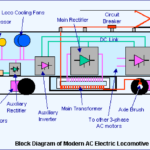If a person receives an electric shock, it is the utmost duty of the observer to rescue the person. The first step is to disconnect the person immediately from the live supply mains by either switching off the main switch.
The body should be pushed away with a dry stick or rope. If a stick is not available, then insulate yourself by standing on a dry wooden board, thick cardboard or rubber (or coconut) matting before trying to get him dear, and even then do not touch his body.
Pull him with his loose clothes like his shirt or coat. Then extinguish the spark if there is any smoldering on the clothes of the victim.
If the heart of the victim stops beating it means death is certain. However, if the victim becomes unconscious and stops breathing, but his heart still beats, he should be immediately given artificial respiration because a slight delay may cause death.
Artificial respiration should be continued until the patient regains his natural breathing or as the doctor advises after his arrival.
A slight regaining of natural breathing is not an indication for stopping the artificial respiration because the victim may stop breathing again. Therefore, the patient should be carefully watched and if the natural breathing stops again, the artificial respiration should be followed at once.
Before starting the first aid for resuscitation, the clothes around the throat, chest, and waist should be loosened. If there are any false teeth or any foreign body in the mouth, they should be removed.
The doctor should be sent for and till the doctor arrives, artificial respiration should be continued.
Also Read: Effect of Electric Current on Human Body at 50 Hz
There are many methods of artificial respiration and any one of them can be followed depending upon the necessity and requirement. Some of these methods are given below.
First Method ( The Best One)
It is the best method of artificial respiration and can be followed as explained below:
1. Lay the victim on the ground as illustrated in the figure
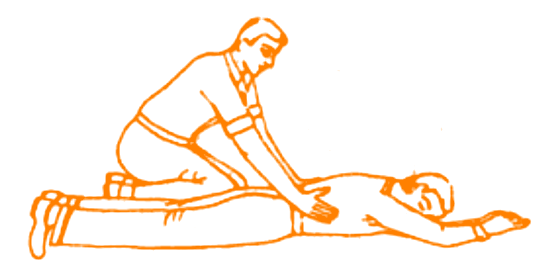
2. Pull his arms forward and put his head on one side resting on an arm so that he can breathe easily.
3. Kneel over the victim, placing your hand flat on his back near the lowest rib in such a manner that the thumbs touch each other and are parallel to the spine. Now spread the fingers on each side over his lower ribs.
4. Lean forward gently over the patient, exerting a downward pressure for two seconds. Similarly, release the pressure slowly by moving backward, keeping the hands in the same position for two seconds as shown in the figure. This expands and contracts the patient’s lungs so as to imitate the breathing.
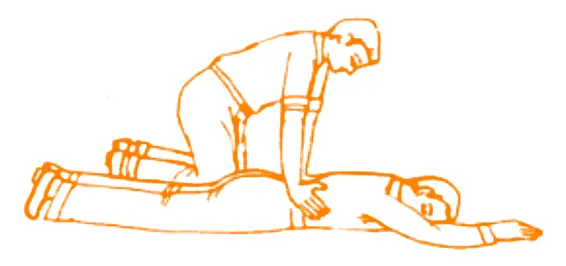
5. When the victim starts breathing, it is better if the rescuer synchronizes his own breathing with him so that the victim can arrive at the natural rate of breathing.
This process should be repeated 12 to 15 times per minute and should be followed continuously with great patience because it can take hours to bring the respiration back.
Second Method
This method is adopted only when a victim’s body has some burns on the chest or anywhere on the front side of the body.
The patient must be laid on the floor as shown in the figure with a pillow or rolled coat under his shoulder. Then the following procedure should be followed.
1. The operator should kneel in the position shown in the figure.
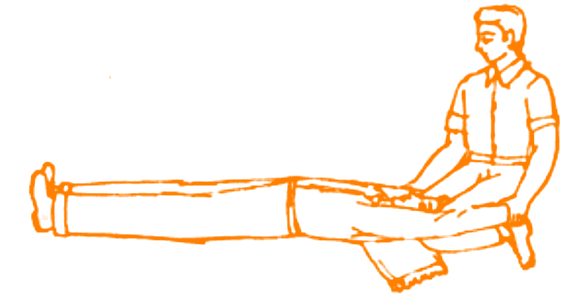
2. Tilt the head a little back. It keeps the tongue out of the throat, thus giving passage to the air.
3. Hold the victim just below the elbow and draw his hand over his head until they are horizontal. Keep them in that state for about two seconds.
4. Now bring the victim’s arms down on each side of his chest, pressing inward on his arms so as to compress his chest as in the figure.
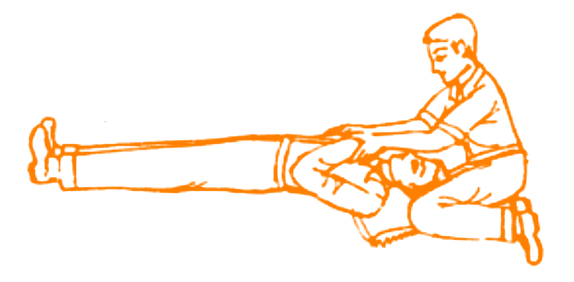
5. After two seconds, repeat the process again. It should be done 12 to 15 times a minute until the patient resumes breathing.
In this procedure, two persons are necessary for performing the artificial respiration because it is required to draw the tongue of the patient out during each inhalation attempt and release it during each expiration stroke. For this reason, this method is a little bit difficult and inconvenient to perform.
Third Method (Artificial Respirator Method)
It is the easiest and most hygienic method of artificial respiration if the apparatus is available.
When the victim has suffered an electric shock and is unconscious, and it is required to bring his respiration back, an artificial respirator is used.
It consists of a rubber-bulb mask and an air filter along with a transparent celluloid valve arrangement. The air enters through the holes of the rubber bulb and goes out through the outlet valve.
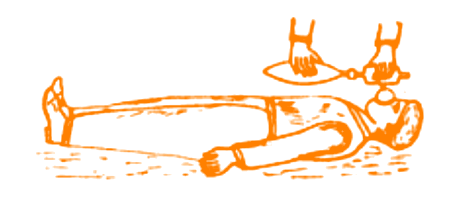
The mask is placed on the mouth and nose of the patient as shown in the figure and the rubber bulb is pressed at the rate of 12 to 15 times per minute to bring his respiration back. This process should be continued regularly until the doctor advises to stop.
Operation of Artificial Respirator
The operation of the respirator is explained below.
The rubber mask is fitted on the mouth and nose of the victim. When the rubber bulb has pressed the air of the bulb passes through the air filter which lifts the inlet valve and closes the outlet valve.
Now this filtered air enters the lung, of the patient through the mask and nose. When the pressure on the bulb is released, the inlet valve closes and the outlet valve is opened which now gives the path to the used air to go out.

